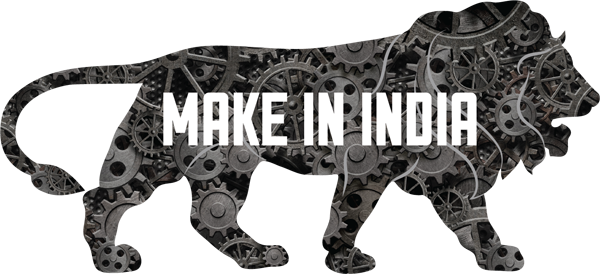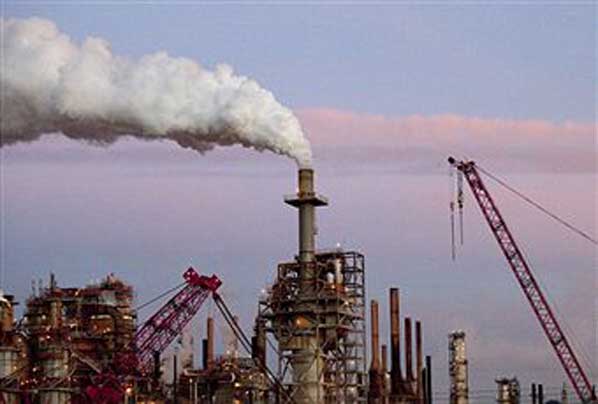
Indian exports have been falling for a while now. For September 2015, the merchandise exports (or goods exports) fell by around 24.6% to $21.8 billion, in comparison to September 2014.
In fact, the merchandise exports between April and September 2015, the first six months of this financial year, have gone down by 17.6% to around $133 billion.
This isn’t surprising in an environment where global growth is slowing down. The International Monetary Fund (IMF) projects the global growth for 2015 to be at 3.1%. This is 0.3% lower than in 2014. Further, it is also 0.2% lower than the forecast IMF made in July 2015.
As the IMF points out: “Prospects across the main countries and regions remain uneven. Relative to last year, the recovery in advanced economies is expected to pick up slightly, while activity in emerging market and developing economies is projected to slow for the fifth year in a row, primarily reflecting weaker prospects for some large emerging market economies and oil-exporting countries.”
It further points out that: “In an environment of declining commodity prices, reduced capital flows to emerging markets and pressure on their currencies, and increasing financial market volatility, downside risks to the outlook have risen, particularly for emerging market and developing economies.”
What this means is that the global economic growth this year and possibly the next, will remain worse than it was in the past. Hence, this will impact Indian exports. Exports for one country are essentially consumer and industrial demand in another.
Having said that Indian exports have fallen much more than other Asian countries. Take the case of China. The Chinese exports in September 2015 fell by 3.7% in comparison to India’s 24.6%. And this is clearly a reason to worry.
So what can India to do step up its exports? It is important to understand here that there are no quick fixes to this problem. An important thing for any country looking to drive up its exports in this day and age is to be a part of global supply chains.
As the World Trade Report for 2013 points out: “A central feature of this second age of globalization is the rise of multinational corporations and the explosion of foreign direct investment (FDI)…By 2009, it was estimated that there were 82,000 multinationals in operation, controlling more than 810,000 subsidiaries worldwide. Upwards of two-thirds of world trade now takes place within multinational companies or their suppliers – underlining the growing importance of global supply chains.”
This is an important factor that Indian policymakers need to understand because this is something that the country is clearly missing out on.
As TN Ninan writes in The Turn of the Tortoise—The Challenge and Promise of India’s Future: “India has not allowed large retail networks to set up base in India. The sourcing requirements of global retail chains would have encouraged scale manufacture that would have led in turn to export success. With the exclusion of the big firms and big supply chains, the country has found itself relatively excluded from global supply networks—and this has stunted export growth.”
One way of correcting this was by allowing foreign direct investment in big retail. The Modi government and the ruling Bhartiya Janata Party (BJP) have been against this. A possible explanation for this is the opposition of the trading community to big retail. The trading community remains a big supporter of the BJP.
In fact, India becoming a part of global supply chains is very important for the Make in India programme to succeed. As of now, it continues to remain a fancy slogan.
As Ninan writes: “In everyday terms, therefore, India does not have the equivalent of an Infosys or a Tata Consultancy Services when it comes to merchandise trade. Nor has it made it easy for Wal-Mart or IKEA to set up store chains in India, the way that IBM and Accenture have set up back offices for BPO. Some of this can still be done, though the political reluctance to allow a free run to large retail trade chains is a constraint.”
One school of thought often espoused these days is based that India will end up capturing the low-end export market being vacated by China. This logic is based on the Chinese labour costs going up. The per capita income of China in 2004 was $1498.2 (current US$, World Bank Data). This had jumped nearly five times to $7,593.9 in 2014. Hence, Chinese labour costs have shot up.
A May 2015 news-report in The Economist points out: “The China price is under pressure, though. Since 2001, hourly manufacturing wages in China have risen by an average of 12% a year…Some believe this means that China’s days as a manufacturing powerhouse are numbered.”
In 2013, Asia as a whole accounted for 46.5% of global manufacturing output. China accounted for half of Asia’s output.
With increasing labour costs the low end manufacturing may no longer be viable. As an example, The Economist points out: “Garments are a natural first step in the spread of production out of China: they are low-skill, low-cost and highly transportable.”
Is India in a position to capture this low-end manufacturing market which is likely to move out of China? In theory, yes. The per capita income in India in 2014 was at $1595.7, which is close to 79% lower than that of China at $7,593.9.
Hence, as far as labour costs are concerned India is cheaper than China. But there are cheaper options like Bangladesh and Myanmar, which are available to manufacturers. The per capita income of both these countries in 2014 was at $1092.7 and $1203.8 respectively.
Also, the labour cost is just one of the things that manufacturers look at. As Ninan summarises the issue: “China has the enabling factor of a very efficient infrastructure, which will not be replicated in the foreseeable future. Indeed, most producers looking for alternatives to China are not looking at India. Its rigid labour laws remain a handicap, its workers are not always productive, the infrastructure is deficient and dealing with the authorities is a nightmare. Almost all countries in East Asia offer easier working environments.”
The column originally appeared on The Daily Reckoning on Oct 24, 2015



